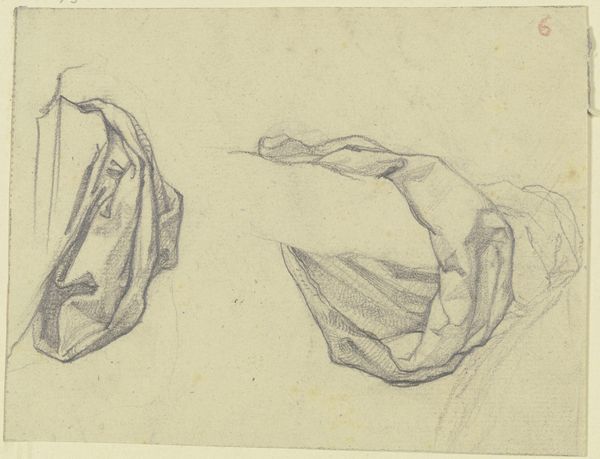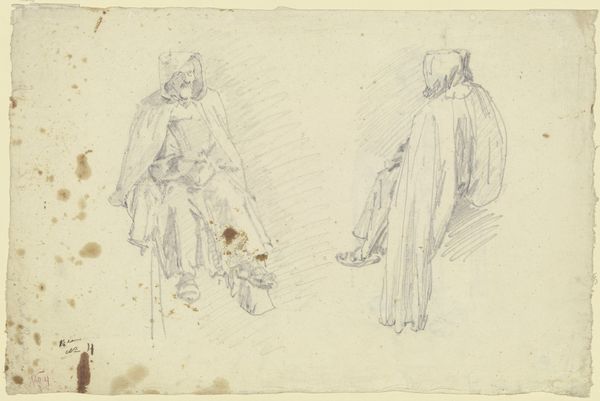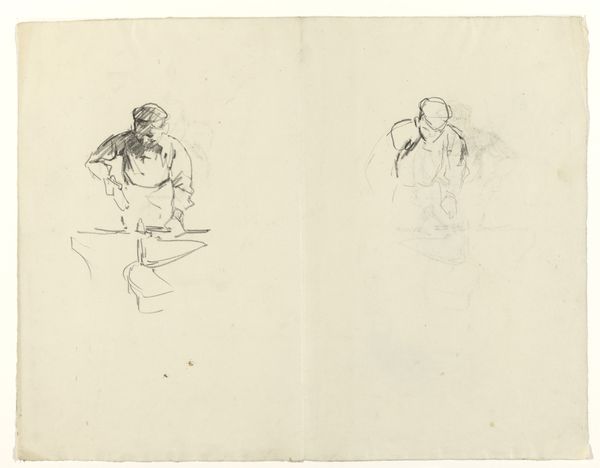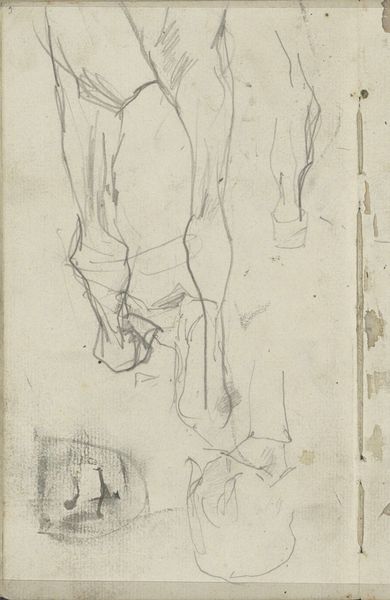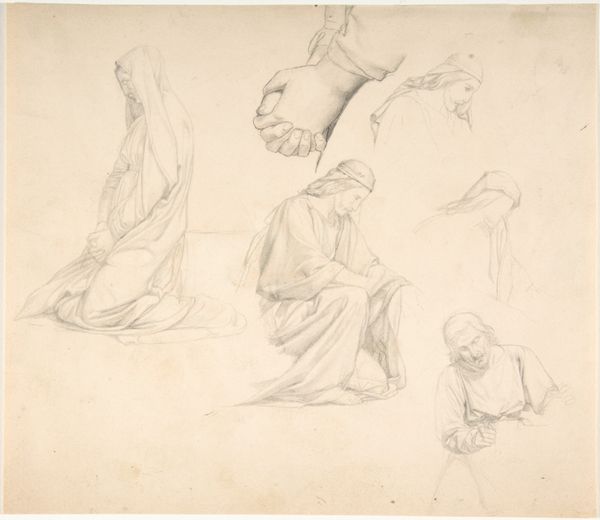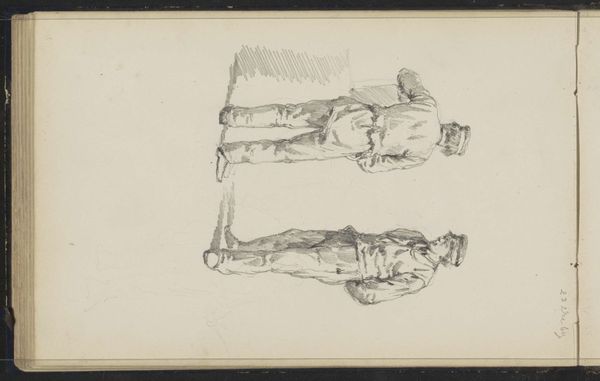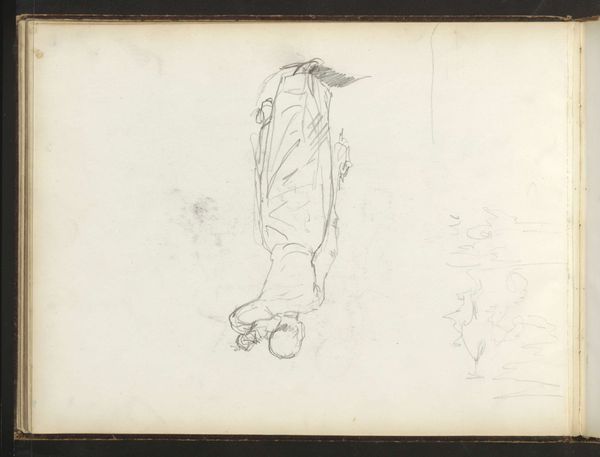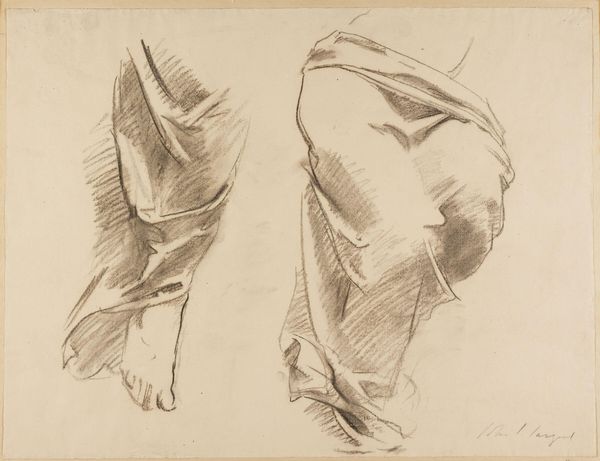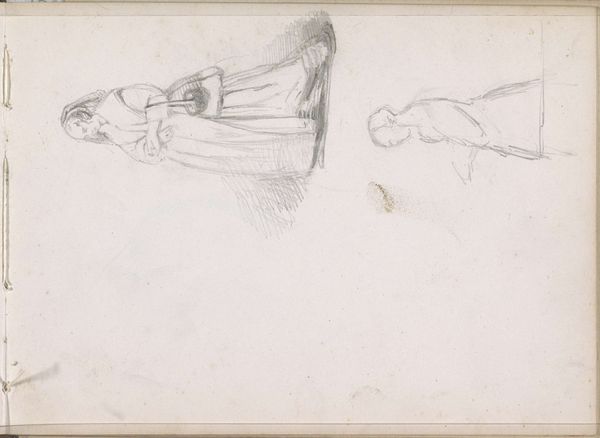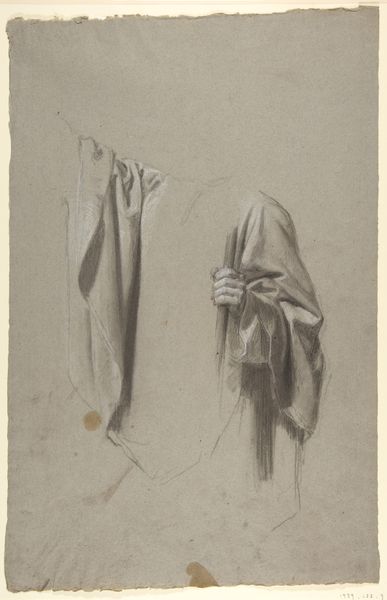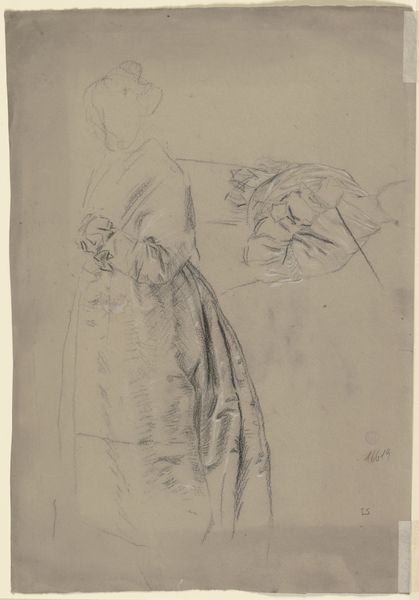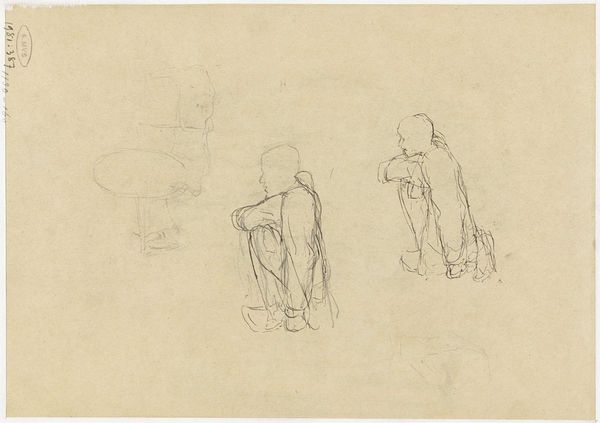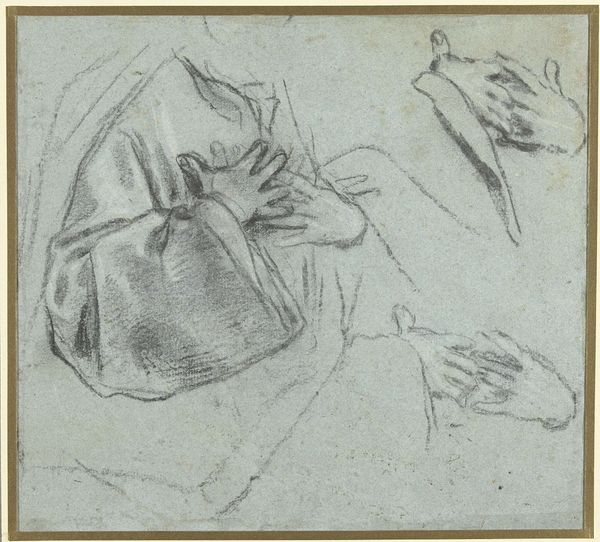
drawing, pencil
#
drawing
#
sketch
#
pencil
#
realism
Dimensions: height 452 mm, width 580 mm
Copyright: Rijks Museum: Open Domain
Editor: Here we have Willem Witsen’s “Composities voor De Molenaar,” a pencil drawing, sometime between 1870 and 1923. It has a sketch-like quality, with various studies on a single sheet of paper. I am struck by its seeming focus on working class objects. What’s your take on it? Curator: It’s interesting you highlight the seemingly working class focus. Let’s consider that: Why do you think Witsen chose to depict these objects – a bag, clothing, tools, perhaps - instead of, say, a landscape or a portrait of someone from his own social sphere? Editor: Well, the title suggests a miller. Maybe he wanted to document the lives and work of those who were less represented in art at the time? Curator: Precisely. And by doing so, what kind of statement might he have been making about class, labor, and representation within the art world itself? This work comes from a time when Realism in art was starting to really focus on representing everyday life of working-class people, reflecting social changes and burgeoning labor movements. Editor: So it’s not just a simple sketch; it’s engaging with social issues through its subject matter? Curator: Absolutely. What visual cues make you say they are studies? The varying perspectives on one plane? Editor: The unfinished look of some sketches, the multiple viewpoints… It doesn’t seem meant to be a finished artwork in itself. It’s like a glimpse into the artist's process. Curator: And what can we read into the process? Considering Witsen was part of the Amsterdam Impressionism movement, could we argue that his studies of the underrepresented populations served not merely documentary purpose but also had the activist purpose to broaden social consciousness? Editor: I never would have considered that but this makes me consider what looks at first to be a preparatory work with a whole new perspective. Thanks! Curator: Exactly. By examining his artistic choices, we unveil potential narratives concerning social equity, and perhaps, how his work might connect to current conversations on the matter.
Comments
No comments
Be the first to comment and join the conversation on the ultimate creative platform.
